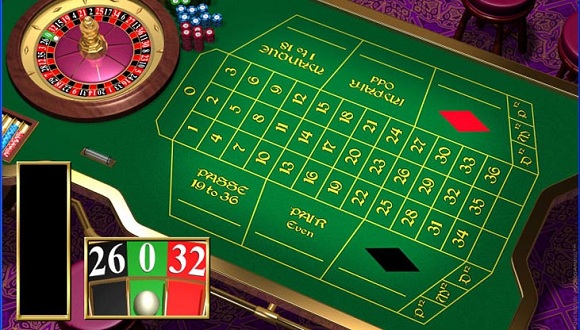|
French Roulette is a form of the game with a few unusual rules and extra betting options. As Roulette was invented in France it is not surprising that there are a few additional quirks in the game, although the fundamentals are exactly the same as in other Roulette variants.
In French Roulette the wheel, numbers and progress of the game are exactly the same as described in our main Roulette article. However, the betting layout is slightly different to accommodate the extra bets. Below we will explain all of the available bets in the game and how they are made.
Play French Roulette at the following Casinos:
La partage rule
One of the major differences between French and European Roulette is ‘la partage’ rule. Under la partage players who bet on eighteen number outside bets (odd/even, red/black etc) have half their stake returned if 0 is the winning number.
In some casinos the returned stake from la partage must be bet again on another even money outside bet. The stake which has been returned but must be bet again is described as ‘en prison’ or imprisoned. If 0 comes in again the stake may have to be bet twice to be released up to a maximum of two, three or four levels of imprisonment.

Bets in French Roulette
The many bets which can be made in the game are either classified as ‘inside’ or ‘outside’ bets. Inside bets cover individual numbers or small groups whereas outside bets cover larger sections of the wheel.
Inside bets
Straight up/number bet: A bet on a single number
Split bet: A bet on two numbers adjacent on the betting layout
Street bet: A bet on a three number ‘row’ of the betting layout
Double street/six line bet: A bet on two adjacent rows
Corner bet: Much like a split bet, but can cover up to four numbers in a square on the betting layout. Corner bets can cover just three numbers if one of them is 0.
Outside bets
Red/Black: All numbers on a Roulette wheel are coloured either red or black, apart from 0 which is coloured green. A bet on red or black covers the eighteen numbers of that colour.
Odd/Even: A bet on whether the next number will be odd or even. Although 0 is an even number it is not included in the bet, so each covers 18 numbers.
High/Low: Another eighteen number bet on whether the number will be low (1-18) or high (19-36).
Column bet: A bet on twelve numbers in a vertical column on the betting layout.
Dozen bet: Covers twelve numbers with three options, 1-12, 13-24 or 25-36.
Call bets
All of the bets listed above are available in all forms of Roulette. However the French version has a few additional options, named ‘call bets’ or ‘announced bets’. These bets cannot easily be made on the betting layout, so the croupier will keep track of the call bets made during a round, take the player’s chips and settle them once the outcome is known.
The available call bets are as follows:
Voisins du Zero: A bet on the seventeen numbers which surround 0 on a Roulette wheel. The bet covers 22, 18, 29, 7, 28, 12, 35, 3, 26, 0, 32, 15, 19, 4, 21, 2 and 25. This is because numbers on a Roulette wheel are not sequential, the bet covers all the numbers which lie between 22 and 25 on the wheel.
Tiers du cylinder: Covers twelve numbers on the opposite side to 0 on the wheel (27, 13, 36, 11, 30, 8, 23, 10, 5, 24, 16 and 33).
Orphelins (orphans): So called because it covers the eight numbers ‘orphaned’ by the more popular Voisins and Tiers bet. The numbers make up two slices of the wheel between the two others and comprises of 17, 34, 6, 1, 20, 14, 31 and 9.
Finals: Pronounced ‘finaal’ these bets cover numbers with the same trailing digit. For example, final 7 covers 7, 17 and 27 whereas final 4 covers 4, 14, 24 and 34.
And the neighbours bets: A bet which covers a specific number and its neighbours on the wheel (rather than on the layout). For example a bet on 21 and the neighbours covers 19, 4, 21, 2 and 25 which are the number called and its four closest numbers (two on each side) on the wheel
|



